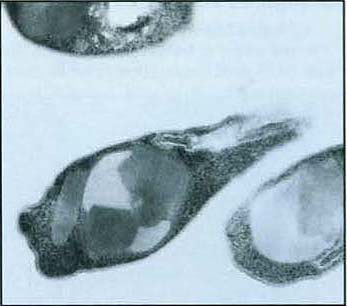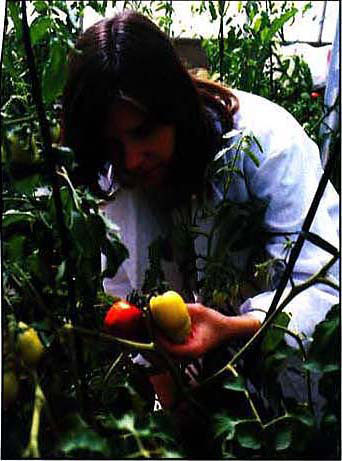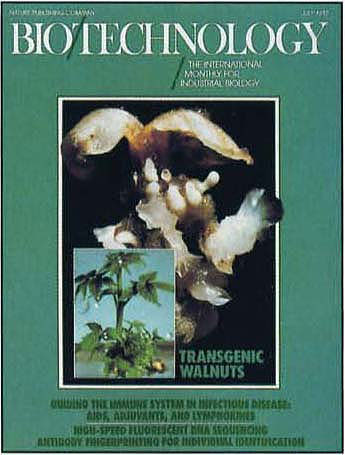All Issues
Feats of UC science that changed daily life
Publication Information
California Agriculture 47(4):30-31.
Published July 01, 1993
PDF | Citation | Permissions
Abstract
Everyday, Californians benefit from 125 years of landmark research performed in the Division of Agriculture and Natural Resources. As the Division celebrates its 125th anniversary, we offer as tribute a list of research feats that enhance daily life.
Full text
Feeding the world
-
Researchers discovered in the late 1800s how to remove salts from the “alkali” soils in California's Central Valley, turning barren land into the world's most productive farming region.
-
A UC bacteriologist developed a heat process to kill the organism that causes botulism, the deadliest form of food poisoning. The 1920 discovery led to the world's first regulations for canned food, fostering the modern canning industry.
-
California's strawberry industry was saved in the 1940s when UC scientists developed a hybrid plant resistant to a devastating virus. Today, California produces 75% of U.S. strawberries.
-
UC scientists in 1946 stopped the “tristeza” virus from wiping out California's citrus industry by creating a hybrid resistant to the virus. Previously, much of South American and South African citrus had died from tristeza.
-
At least a half dozen varieties of tomatoes were developed by UC from 1956 to 1982. They represent as much as 85% of the nation's production.
-
UC advances in oyster, trout, striped bass and sturgeon culture fostered California's seafood and fish farming industry; research also helped save native sturgeon.
-
For five decades, UC scientists have advanced the basic understanding of important livestock diseases and developed vaccines and other preventive measures to combat such maladies as rinderpest, blue tongue virus and Newcastle disease.
-
UC scientists in the 1960s and 1970s modernized farming with new machinery, such as tree-shaking devices for harvesting fruit and nuts, and the mechanical tomato harvester.
-
More than a million people in Africa were fed and famine was averted by a black-eyed bean developed by UC in the 1980s. The bean, which thrives in drought-stricken Senegal, tripled crop productivity in one of the world's harshest environments.
-
UC scientists discovered that a gene in a common bacterium triggers frost damage in crops. In 1988, they altered the bacterium to prevent freezing and found that crops coated with the so-called “ice minus” bacterium were less susceptible to frost.
-
The ash whitefly, which ruined crops in the West, was controlled by UC scientists in 1989, using a tiny stingless wasp that feeds on the flies. The fly was eradicated without pesticides.
-
A new avocado variety, developed by UC in 1991, outproduces the industry mainstay by 2 to 1. The “Gwen” avocado equals the quality of the Hass, but is larger and more uniform.
-
In 1992, tomatoes were genetically altered by UC scientists to turn ripe on cue, and remain ripe for as long as three months without spoiling. This discovery may help consumers, especially those in Third World countries, store fruit longer without refrigeration.
-
More than 90% of California's wheat is in UC varieties. UC breeding research yielded the first triple-disease-resistant wheat variety, as well as salt tolerant wheat that can utilize marginal soil and water.
Turning points in human health
-
Since the 1920s, UC scientists have pioneered discoveries in human nutrition, often in the course of animal research. They discovered, isolated and defined the functions of such important nutrients as: the coenzyme form of vitamin B12, biologically-active vitamin D, vitamin K, niacin, pantothenic acid, vitamin B6 (pyridoxine), vitamin A and vitamin E.
-
UC scientists elucidated the essential biological functions of these nutrients as well as their roles in various diseases, including pernicious anemia, obstructive jaundice, hermorrhaging in newborns, pellagra, and other anemias.
-
In the 1950s, scientists identified oxidant damage to biological systems. Vitamins C and E, beta carotene and selenium were found to protect against oxidants in smog, sunlight and toxic chemicals.
-
UC researchers in 1990 performed the first robot-assisted surgery, using a device they developed called “Robodoc” that cuts bone for hip implants. It carves a cavity with such precision that 96% of the implant is in contact with the bone.
Innovations in pest control
-
Since the turn of the century, UC scientists have helped develop more than 30 successful examples of classical biological control of crop pests. In Southern California coastal citrus, for instance, major pests such as red scale, citrus whitefly, black scale, yellow scale, red mite, snails and mealybugs are biologically controlled.
-
Beginning in the 1950s, UC scientists coined the term “integrated control” — the forerunner of “integrated pest management” — and pioneered these innovative principles.
-
UC was the first to use insect diseases, rather than pesticides, to control insect pests. In 1951, scientists used a bacterium which infected a specific group of insect pests to combat caterpillars that destroyed alfalfa. UC scientists founded the first Laboratory of Insect Pathology and discovered some 30 insect diseases.
-
The first registered commercial insect pheromone formula was developed by UC scientists in collaboration with industry. The natural sex attractant that disrupts mating cycles was pioneered using slow release formulas through hollow fibers, allowing dispersal over several weeks.
-
UC scientists developed a new generation of safer pesticides known as “proinsecticides.” While toxic to insects, the coumpounds were converted to nontoxic products by mammals.
Protecting the environment
-
UC foresters in 1947 developed cultivation practices that today are the standard for reseeding forests.
-
A UC professor of natural history in 1972 founded UC's Natural Reserve System, which today preserves more than 100,000 acres of pristine California land for teaching and research.
-
UC scientists in 1987 found a way to remove toxic levels of selenium in soil using microbes that consume the trace element. Previously, soil microbes were too slow to be practical. UC scientists sped-up the process by adding activators.
-
In the 1950s, ozone was discovered to be the most damaging air pollutant to plants and the most and least smog susceptible crops were identified.
New frontiers
-
The photosynthetic process, by which plants use sunlight to change carbon dioxide and water into sugar, was discovered in 1954 by a UC scientist.
-
A UC scientist was the first to identify the reaction center in photosynthesis. Research, conducted from 1972 to 1992, revealed that the reaction center is responsible for light absorption and energy transfer.
-
The foundation for plant biotechnology and micrografting was established in the 1960s when UC plant scientists first developed parameters for growing plant cells in tissue culture. The techniques enabled scientists to generate whole plants — each a clone of its parent — from single cells. Today, these methods permit researchers to generate whole plants from genetically engineered cells.
-
A UC research team in 1984 used genetic engineering to decode genes from a 20-million-year-old fossil magnolia leaf. By comparing old and new DNA, far-reaching conclusions are being made about evolution.
-
UC scientists analyzed the oldest piece of genetic material ever found — DNA from a bee dating back as long as 40 million years. They proved in 1992 that DNA could survive longer than believed.
-
Among the first transfers of “foreign” genes into woody plants were accomplished when genetically altered walnut and apple trees (carrying marker genes) were field grown. This research will enable scientists to endow woody species with pest and disease resistance, and other desirable traits.
Other notables
-
Since the 1930s, UC researchers have helped make California wines among the best in the world by developing new grape varieties and new winemaking techniques.
-
UC scientists in the late 1950s developed a chemical treatment for fabric that prevents moths and carpet beetle larvae from eating wool fiber.







